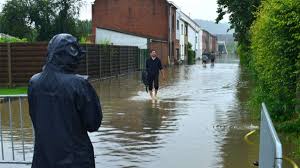In an era marked by climate change and unpredictable weather patterns, the significance of flood risk reports cannot be overstated. These reports serve as invaluable tools for individuals, businesses, and governments to understand and mitigate the potential risks posed by flooding. Whether it’s for purchasing property, obtaining insurance, or urban planning, a comprehensive flood risk report is essential to informed decision-making.
Importance of Flood Risk Reports
Flood risk reports provide vital insights into the likelihood and severity of flooding in a particular area. For businesses like Land Registry Online, these reports are crucial for assessing property values and informing clients about potential risks. They offer a detailed analysis of flood-prone areas, helping stakeholders take proactive measures to protect lives and property.
Key Components of a Comprehensive Flood Risk Report
Location and Property Information
The foundation of any flood risk report lies in accurate location and property data. This includes details such as elevation, proximity to water bodies, and construction materials used. Such information forms the basis for further analysis.
Flood Zone Classification
Identifying flood zones is paramount in assessing risk levels. Flood risk reports categorize areas based on their susceptibility to flooding, ranging from high-risk flood zones to those with minimal risk. This classification guides decision-making processes regarding land use and development.
Historical Flood Data
Examining past flood events provides valuable insights into recurring patterns and trends. Historical flood data helps in understanding the frequency, intensity, and impact of flooding in a given area, enabling better preparedness and response strategies.
Drainage Infrastructure Analysis
The effectiveness of drainage systems plays a crucial role in flood mitigation. Flood risk reports assess the capacity and condition of drainage infrastructure, highlighting areas prone to water accumulation and potential vulnerabilities.
Vulnerability Assessment
Understanding the vulnerability of structures and communities to flooding is essential for risk management. Vulnerability assessments identify factors such as building design, emergency preparedness, and socio-economic demographics that influence the impact of floods.
Risk Mitigation Recommendations
Based on the analysis conducted, flood risk reports offer recommendations for mitigating potential risks. These may include structural modifications, land use restrictions, or the implementation of early warning systems to enhance resilience against flooding.
Gathering Data for Flood Risk Reports
Accurate data collection forms the backbone of flood risk assessment. Technologies such as Geographic Information Systems (GIS), remote sensing, and field surveys are employed to gather data on topography, hydrology, and land use, ensuring comprehensive and reliable reports.
Analyzing Data and Generating Reports
Once data is collected, advanced analytical techniques are employed to assess flood risk levels. This involves modeling various scenarios based on factors such as rainfall intensity, soil permeability, and terrain elevation. The findings are then synthesized into detailed reports for stakeholders.
Role of Technology in Enhancing Flood Risk Reporting
Advancements in technology have revolutionized flood risk reporting processes. From high-resolution satellite imagery to real-time monitoring systems, technology enables more accurate and timely assessment of flood hazards, empowering decision-makers with actionable insights.
Ensuring Accuracy and Reliability in Flood Risk Reports
The accuracy and reliability of flood risk reports are paramount. Quality assurance measures, including peer review processes and adherence to industry standards, are essential to ensure that reports provide trustworthy information for decision-making purposes.
Regulations and Compliance
In many jurisdictions, regulations mandate the inclusion of flood risk assessments in property transactions and development projects. Compliance with these regulations not only protects stakeholders but also promotes sustainable and resilient urban development.
Challenges in Flood Risk Reporting
Despite advancements in technology and methodologies, challenges persist in flood risk reporting. These include data gaps, limited access to specialized expertise, and the evolving nature of flood hazards due to climate change. Addressing these challenges requires ongoing collaboration and innovation within the industry.
Future Trends in Flood Risk Assessment
Looking ahead, the field of flood risk assessment is poised for further evolution. Emerging trends such as machine learning, big data analytics, and community-based flood monitoring hold promise for enhancing the accuracy and accessibility of flood risk information, ultimately contributing to more resilient communities.
Conclusion
In conclusion, a comprehensive flood risk report analysis is a valuable tool in our attempts to understand, control, and mitigate the effects of floods. By incorporating essential elements such as accurate location data, flood zone categorization, and intelligent risk reduction suggestions, these reports provide stakeholders with the necessary information to make informed decisions and promote the growth of resilient communities. These reports are essential to our joint efforts to address the problems caused by flooding because they allow us to take preventative action and promote a culture of readiness and flexibility.



